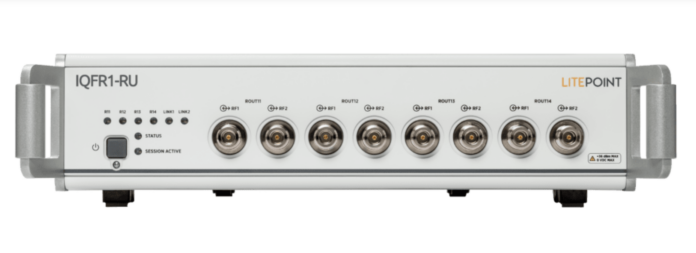LitePoint focused on testing Open RAN MIMO radio units as a whole rather than antenna-by-antenna
As operators look to maximize spectrum utilization and deliver strong quality of experience to users, multi-antenna MIMO radio units have become mainstays in global radio access networks (RANs). LitePoint has focused on a simplified testing approach wherein instead of radio unit (RU) testing that goes antenna-by-antenna, the MIMO system is tested as a whole. In addition to simplifying the process, this method gives better insight into real world performance, and supports the long-term trend toward Open RAN.
Speaking at the recent Test and Measurement Forum (available on demand here) LitePoint Senior Product Manager Middle Wen explained that testing all antennas at once in a 4×4 MIMO configuration can reduce test cycle time by almost half. He also noted that concurrent antenna testing can help expose RF performance issues. “The MIMO testing can help the engineers to verify the real performance,” he said.
In an Open RAN system, RUs are typically tested in isolation, meaning it’s not connected to the other components that would be present at an actual radio site. The primary focuses are on fronthaul and RF interfaces and the RU is connected to an emulated distributed unit (DU). “This testing setup is quite complex, expensive and difficult to set up,” Wen said.
LitePoint’s solution is its fully-integrated IQFR1-RU single box which supports RF parametric and fronthaul conformance testing thereby eliminating dependence on an emulated DU. The unit also supports MIMO signal generation and analysis and reduces time-to-market by leveraging automation software.
In the RU testing process, Wen called out the importance of uplink testing that involves not just the wanted signal but also a range of interference signals that could be present in a live network. LitePoint has also integrated this functionality into its single box to simplify the design of uplink testing scenarios, including reference sensitivity level, dynamic range, adjacent channel selectivity, in-band blocking, narrowband blocking, out-of-band blocking, receiver spurious emissions, receiver intermodulation and in-channel selectivity.
Speaking more broadly about Open RAN adoption, Wen pointed to a number of recent operator announcements, particularly AT&T’s $14 billion, five-year deal with Ericsson, that suggest single-vendor Open RAN as a sort of “middle step” between single-vendor RAN and multi-vendor Open RAN. Regardless, “O-RAN I think is very clearly transforming the mobile industry,” he said.
But, driving faster adoption in both greenfield and brownfield environments, he said, will come down to fast, accurate testing with an emphasis on the RU given that “it determines what the real radio performance of your entire system” will be. “RU testing is critical for the success of O-RAN.”

